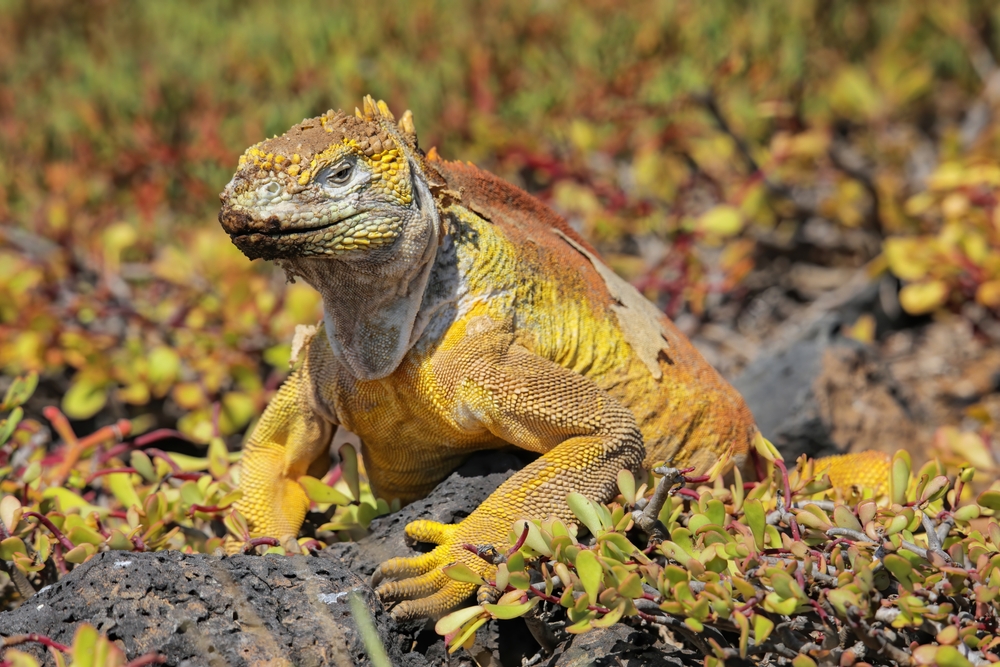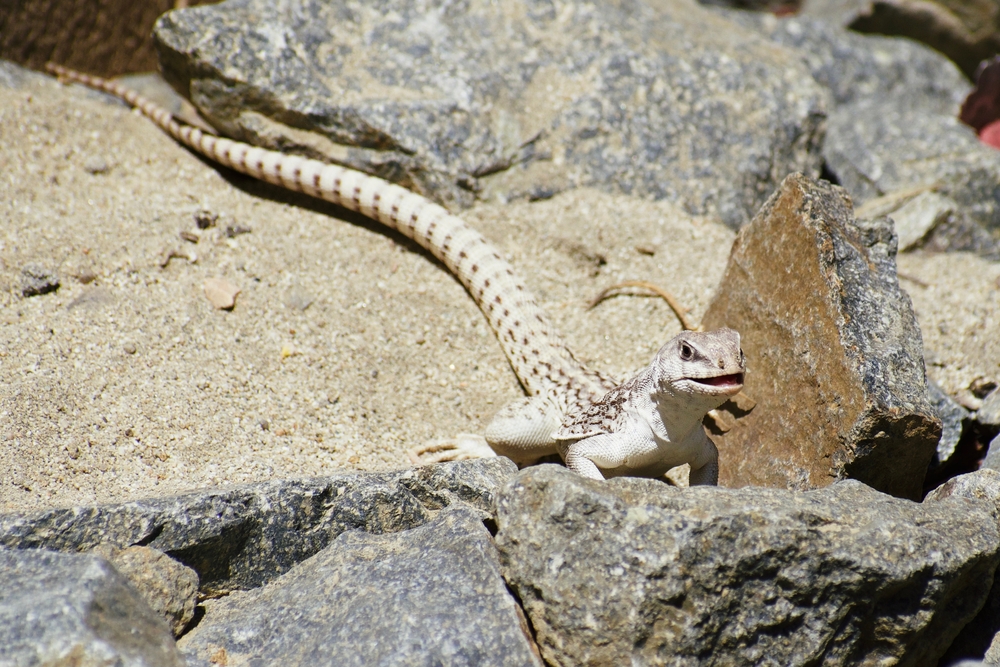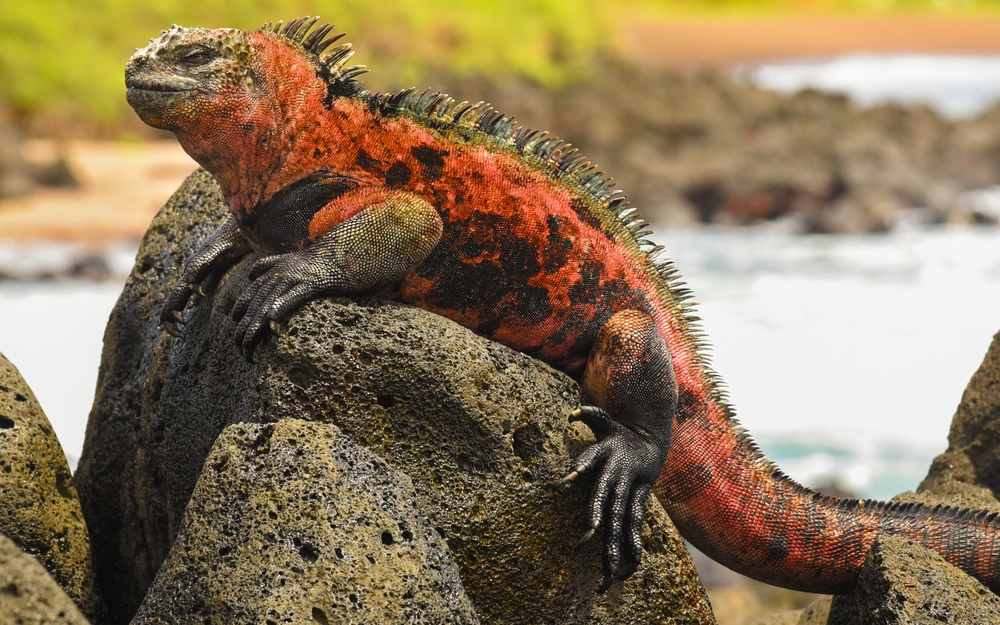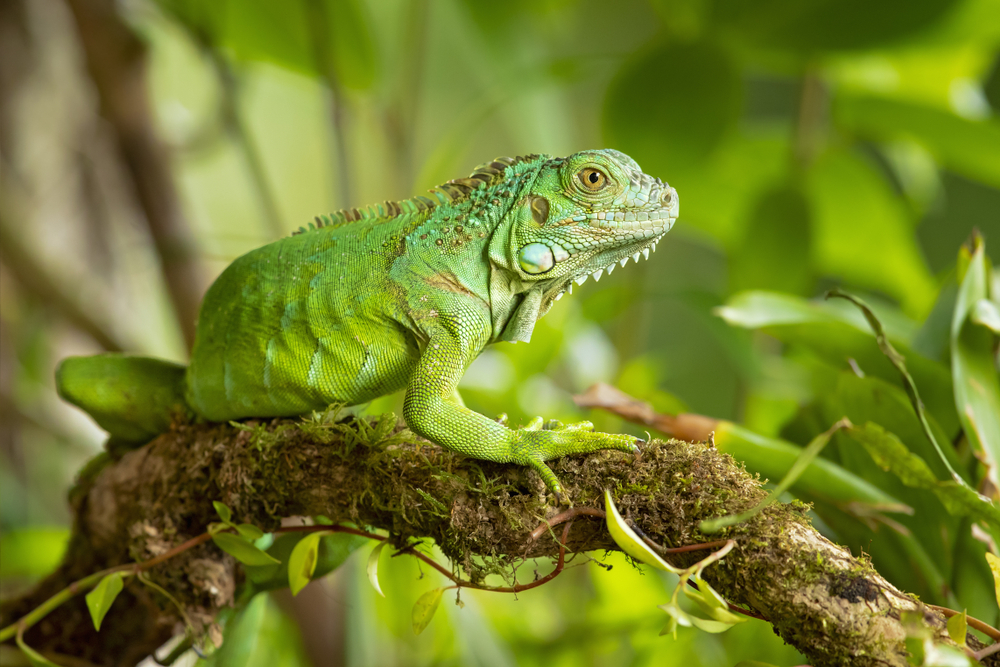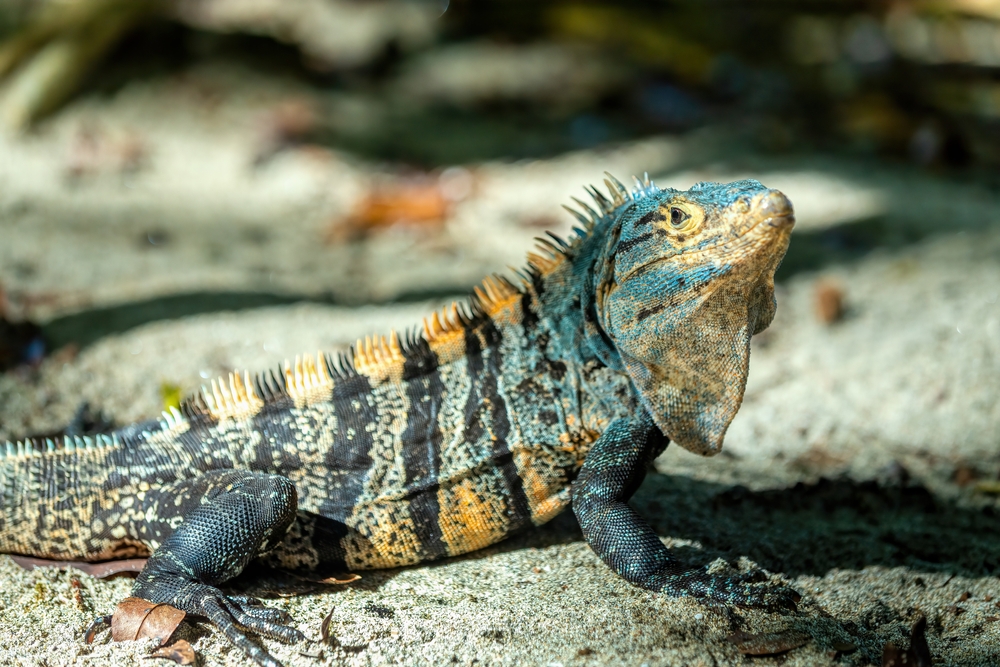Uniqueness
The Galápagos Land Iguana is one of the most iconic reptiles of the Galápagos Islands, renowned for its prehistoric appearance, brilliant coloration, and deep evolutionary roots. It stands out for its role in Darwin’s observations, its coexistence with Marine Iguanas, and its extreme adaptation to arid volcanic terrain.
Endemic to the Galápagos:
The Galápagos Land Iguana is found nowhere else on Earth. It evolved in island isolation, adapting to lowland deserts and volcanic plains where few reptiles can thrive. Its distribution is restricted to a handful of islands, with no two island populations exactly alike.
Living with Marine Iguanas:
On some islands (e.g., Plaza Sur), Land Iguanas and Marine Iguanas coexist, sometimes hybridizing—a rare phenomenon between two species with vastly different ecologies. This unusual overlap provides a living example of adaptive divergence in a shared environment.
Cactus-Eater with Spine Tolerance:
One of the few vertebrates able to feed heavily on prickly pear cacti, Land Iguanas use thick tongues and robust jawsto chew through the pads, ignoring spines that deter other animals. This makes them essential seed dispersers and plant pruners in their ecosystems.
Darwin’s “Ugly Animals”:
Charles Darwin described them as “ugly animals, of a yellowish orange beneath and brown above…from their low facial angle they have a singularly stupid appearance.” Despite this, they became central to his theories on island evolution—a role that helped launch modern evolutionary biology.
Slow Life in a Harsh Land:
Unlike most lizards, Land Iguanas take 8–12 years to reach maturity, can live 40+ years, and survive long periods of drought and food scarcity by lowering metabolic activity and sheltering in deep burrows. This makes them masters of resource conservation in dry island ecosystems.
Conservation Symbol:
Once threatened by introduced predators and habitat loss, the Galápagos Land Iguana has become a flagship species for island restoration, with reintroduction efforts now helping it reclaim lost territory on Santiago and Baltra Islands.
With its golden body, volcanic resilience, and evolutionary legacy, the Galápagos Land Iguana is not only one of the most distinctive reptiles alive today—but also one of the most important symbols of island adaptation and conservation success.



































































